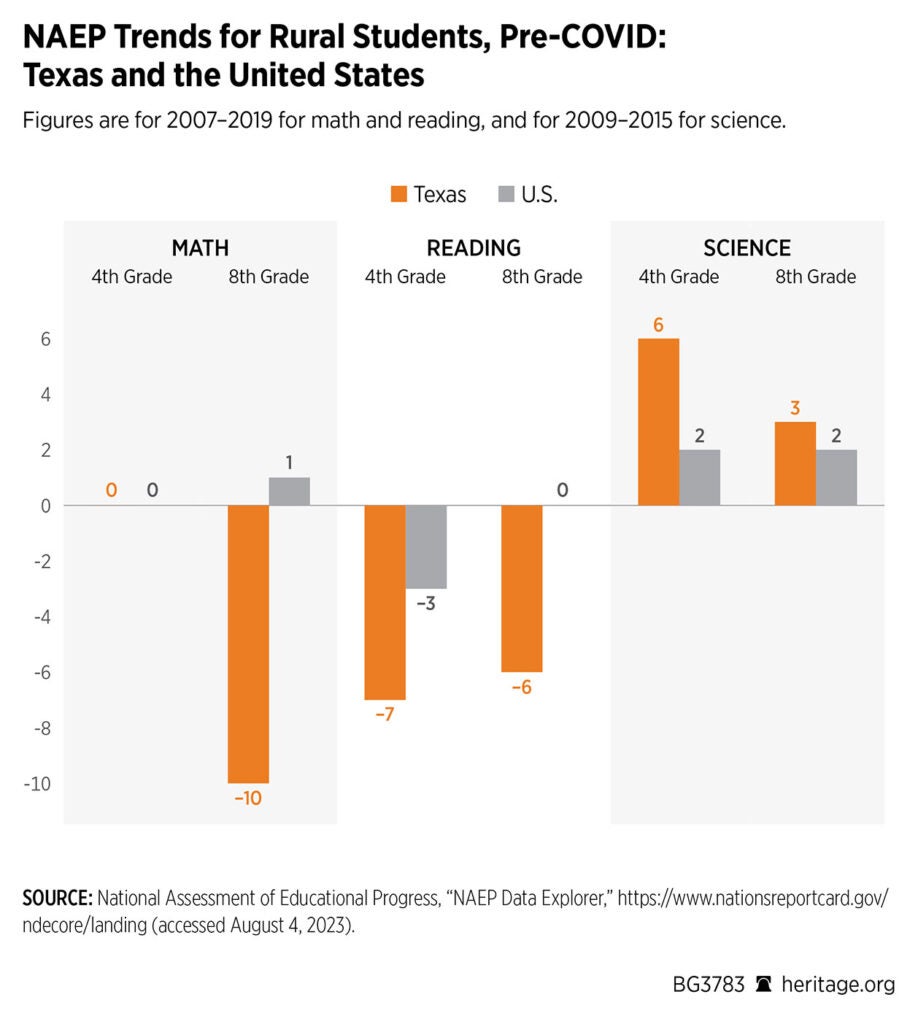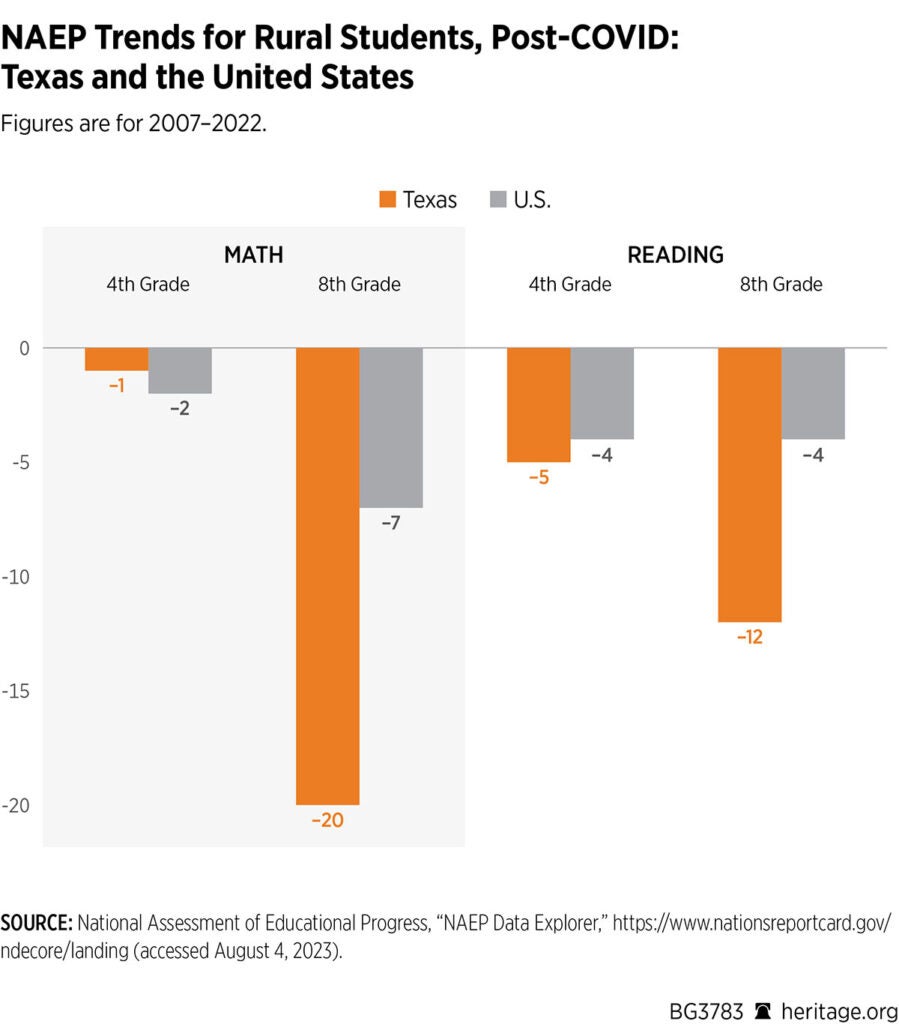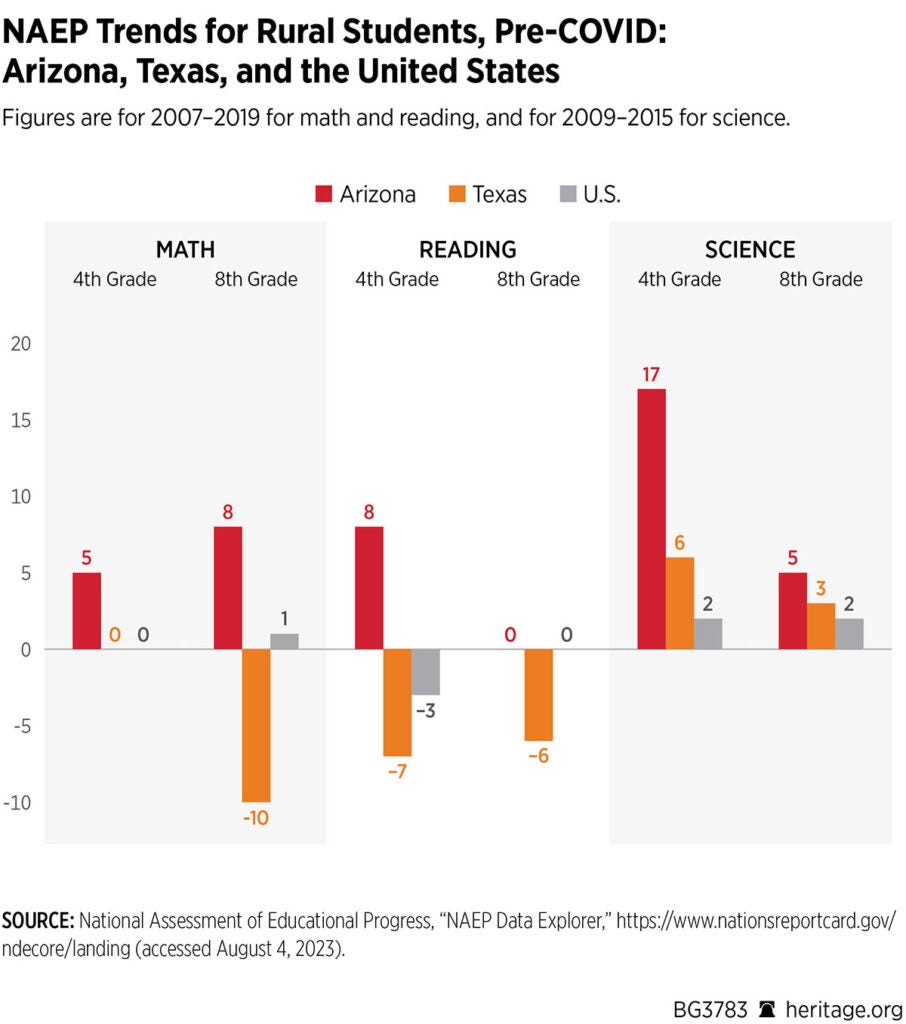Texas Gov. Greg Abbott has called a special legislative session to begin Oct. 9 to expand K-12 options for Texas families.
In the past few years, nine states have made every K-12 student eligible for education choice.
“Empowering parents to choose the best educational path for their child remains an essential priority,” said Abbott, who noted that a “majority of Texans from across the state and from all backgrounds support expanding school choice.”
The Daily Signal depends on the support of readers like you. Donate now
Evidence from other states shows that students benefit greatly from school choice policies.
But not everyone in the Lone Star State is on board.
Texas state Rep. Trey Martinez Fischer, D-San Antonio, and the House minority leader, claims that Texans “already have school choice” in the district school system. His claim is reminiscent of Henry Ford, who once said that customers could have a Model T in any color they wanted “as long as it’s black.”
The Texas Constitution guarantees funding for K-12, but it does not mandate a one-size-fits-all system. In reality, one size fits few.
Critics also claim that giving families more education options will “destroy” rural school districts. Fortunately, they have nothing to fear. Other states have been expanding choice for decades without harming rural schools.
Indeed, if anything, choice policies appear to spur improvement.
Two states away, Arizona has the most robust K-12 choice in rural areas of any state by a country mile, and its rural schools show strong positive trends in academic achievement. Rural Arizona not only still has Friday night football, but also educational variety and academic improvement.
By contrast, in rural Texas, national exams show a significant long-term drop in learning.
Rural students in Texas suffered large declines in reading and mathematics achievement both before and after the COVID-19 pandemic. For example, Texas eighth graders dropped approximately a grade level in math between 2007 and 2019 and then dropped an additional grade level between 2019 and 2022.

Put another way, in 2022, Texas eighth graders demonstrated a knowledge of mathematics of the average sixth grader in 2007.

A skeptic might attempt to claim that matters would be even worse if state lawmakers gave rural Texas families additional school options, but this claim does not square with actual experience.
Arizona has both the greatest degree of K-12 choice overall and by far the most K-12 options for rural families. Arizona lawmakers adopted the nation’s most robust charter school law and passed a statewide district open-enrollment statute in 1994.
Arizona lawmakers followed in 1997 with private school tax credits and expanded the program multiple times thereafter. In 2011, Arizona lawmakers created the nation’s first K-12 education savings account program, which families can use for a wide variety of educational expenses.
Arizona lawmakers expanded ESA eligibility a number of times before making all K-12 students eligible in 2022.
Yet rural Arizona communities did not get the memo on “destruction.”
All of Arizona’s school districts operating in the year before the advent of education choice are still in operation. Moreover, unlike rural Texas schools, the national exams show unusually large academic gains for students in rural Arizona.

Stanford University scholars linked state testing data from across all 50 states to create another method to compare academic results across states between 2008 and 2019. The Stanford data also show a much faster rate for student academic growth in rural Arizona over that of students in rural Texas.
School choice policies benefit teachers, too. In Arizona, teachers can start their own schools, and families effectively decide which of those new schools thrive, replicate, or close.
Texas should demonstrate the same confidence in rural teachers and communities to create a vibrant set of schools. Texas school districts won’t go away, but Texas teachers and students would benefit.
In the past two years, lawmakers in Arkansas, Arizona, Florida, Indiana, Iowa, New Hampshire, North Carolina, Ohio, Oklahoma, South Carolina, Utah, and West Virginia have all passed major legislation expanding education choice.
Texas families and teachers should have the same opportunity to shape the K-12 space.
Variety in schools allows families to match the aspirations of their child with specialized schools, giving both students and teachers greater opportunity in the process.
Texas families deserve more than the educational equivalent of the Model T. The same healthy competition that spurred the “Texas Miracle” of the Lone Star State’s economy is exactly what the Texas education system needs.
Rural Texas communities have nothing to fear and much to gain.
Have an opinion about this article? To sound off, please email letters@DailySignal.com, and we’ll consider publishing your edited remarks in our regular “We Hear You” feature. Remember to include the URL or headline of the article plus your name and town and/or state.































